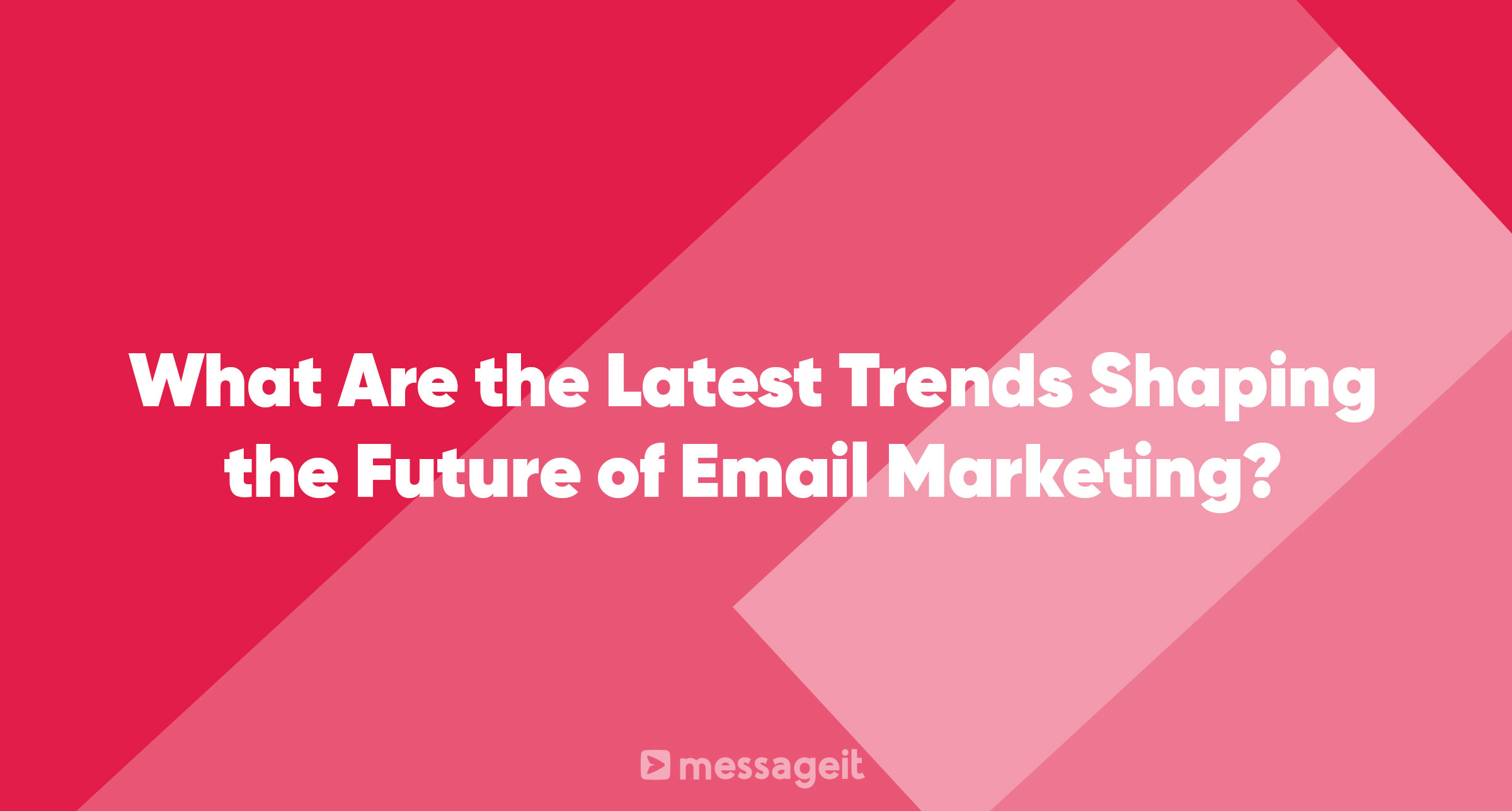Email marketing has long been a powerful tool for businesses to reach their target audience. However, as technology continues to evolve at a rapid pace, it's important for marketers to stay on top of the latest trends in order to maximize the effectiveness of their email campaigns. In this article, we will explore the key trends that are shaping the future of email marketing and how businesses can leverage them to stay ahead of the competition.
1. Hyper-Personalization: Connecting on an Individual Level
One of the most significant trends in email marketing is hyper-personalization. Gone are the days of generic email blasts; customers now expect personalized content that speaks directly to their needs and interests. By leveraging data and insights from various sources, such as social media, businesses can create highly tailored email experiences for each subscriber.
- Segmentation for Targeted Content: Basic personalization, like addressing recipients by their names, is no longer enough. Marketers need to go beyond and segment their audience based on behavior, preferences, and demographics to deliver truly personalized and relevant content.
- Dynamic Emails for Real-Time Updates: Static emails are a thing of the past. Dynamic emails that update in real-time based on user actions and preferences ensure that the content is always fresh and relevant.
- Personalized Email Designs: Personalization extends beyond the content to the design of emails. Customizing emails to match individual users' aesthetic preferences can enhance engagement and make the email experience more enjoyable.
2. Automation: Streamlining and Enhancing Communication
Automation has revolutionized email marketing by streamlining communication and saving valuable time. With email automation tools, businesses can set up predefined triggers and schedules, ensuring that the right messages are delivered to the right audience at the right time.
- Triggered Emails: Behavioral-triggered emails, such as abandoned cart reminders or welcome emails, can be automatically sent based on user actions, increasing engagement and conversion rates.
- Automated List Hygiene: Automation can help maintain a clean and updated email list by automatically removing inactive or uninterested subscribers, ensuring that marketers are only reaching out to qualified leads.
- Visual Automation Workflows: Visual automation workflow builders provide a clear overview of the email flow, making it easier to create and manage complex automation sequences.
3. AI and Machine Learning: Taking Personalization to the Next Level
Artificial Intelligence (AI) and machine learning are transforming the way businesses approach email marketing. These technologies can analyze vast amounts of data to understand consumer behavior, optimize send times, and personalize content at scale.
- Predictive Personalization: AI-powered predictive personalization tools analyze customer data to predict future behavior, enabling marketers to customize content, offers, and timing based on individual preferences.
- AI-Driven Content Creation: AI tools can generate compelling subject lines, call-to-action buttons, and even entire emails that resonate with the audience, saving time and resources.
- Send Time Optimization: AI algorithms can determine the best time to send emails to each recipient, increasing the likelihood of engagement and conversions.
4. Interactive Emails: Engaging and Immersive Experiences
Interactive emails have gained popularity and are expected to continue shaping the future of email marketing. By incorporating elements like quizzes, image carousels, and videos, businesses can create engaging and immersive experiences that capture the attention of recipients.
- Boosting Click-Through Rates: Interactive content like quizzes and videos can significantly increase click-through rates, driving more traffic to your website and increasing conversions.
- Real-Time Updates and Instant Actions: Interactive emails can provide real-time updates and allow recipients to take instant actions, such as making a purchase or submitting a form, directly within the email.
5. User-Generated Content: Leveraging Authenticity and Social Proof
User-generated content (UGC) has become a powerful tool for brands to build trust and engage with their audience. By encouraging customers to share their experiences and opinions, businesses can leverage UGC in their email marketing campaigns to foster authenticity and social proof.
- Reviews and Testimonials: Including customer reviews and testimonials in emails can help build trust and credibility, as consumers are more likely to trust recommendations from their peers.
- Contests and Social Media Integration: Encouraging users to participate in contests or share their experiences on social media can generate valuable UGC that can be incorporated into email campaigns.
6. Mobile Optimization: Tailoring Emails for Mobile Users
With the majority of users accessing emails on mobile devices, optimizing emails for mobile has become crucial. Ensuring that emails are mobile-friendly and responsive is essential for providing a seamless user experience and maximizing engagement.
- Responsive Design: Emails should be designed to automatically adjust to different screen sizes, ensuring that the content is easily readable and accessible on mobile devices.
- Short and Snappy Content: Mobile users have limited attention spans, so emails should be concise and to the point, focusing on the most important information.
In conclusion, the future of email marketing is driven by hyper-personalization, automation, AI, interactivity, user-generated content, mobile optimization, and more. By staying abreast of these trends and incorporating them into their strategies, businesses can create more effective and engaging email campaigns that resonate with their audience, drive conversions, and ultimately, achieve their marketing goals. Stay ahead of the competition by leveraging these trends and maximizing the potential of email marketing in the ever-evolving digital landscape.
